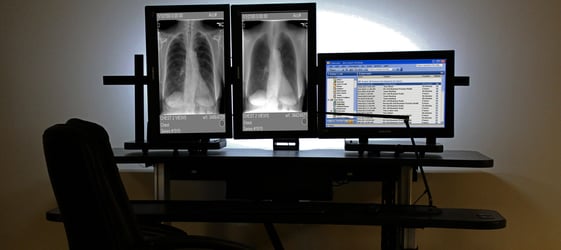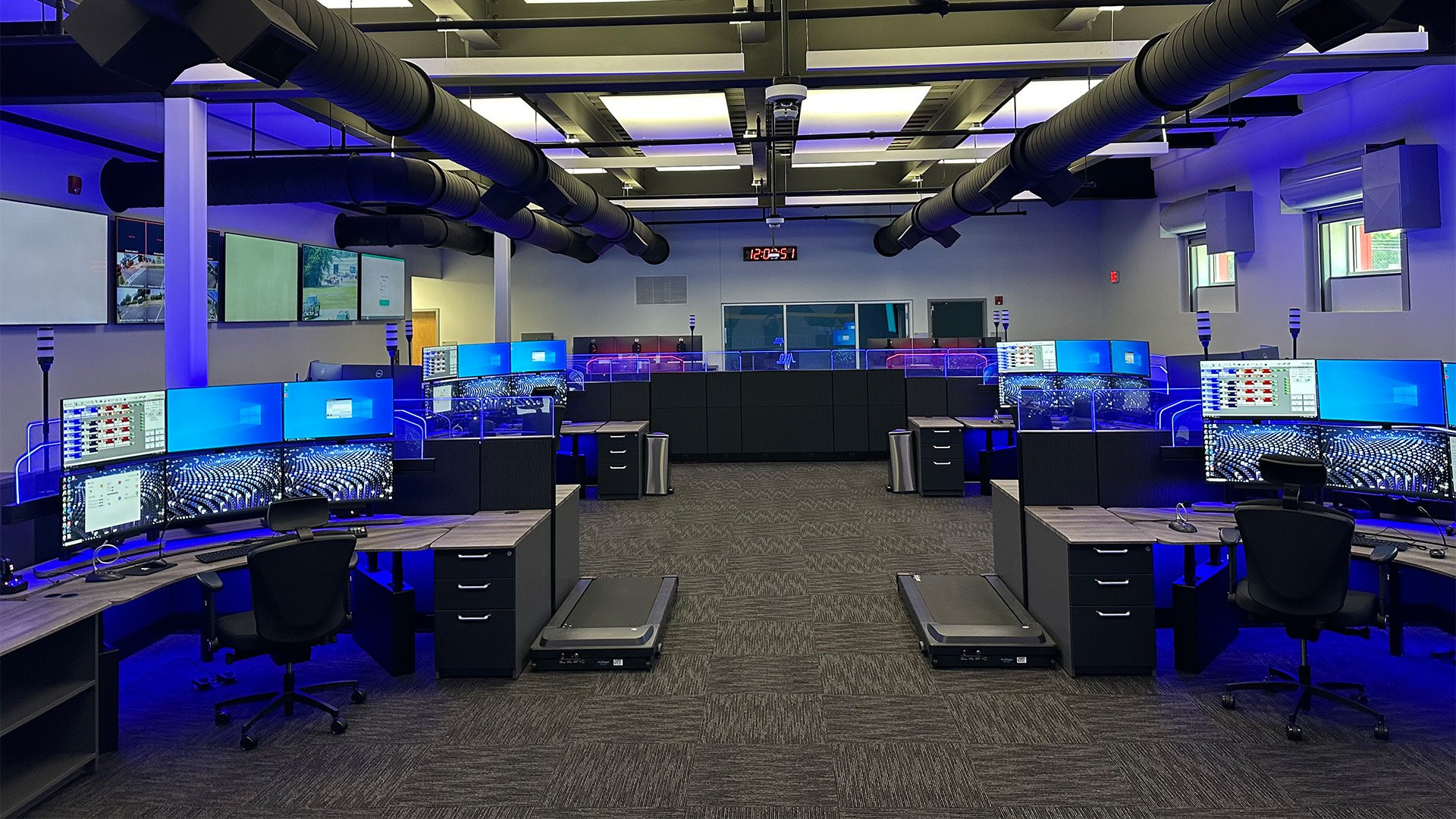Typically, a radiologist’s work environment is a very dark room with the exception of the light coming from the monitors the goal being to interpret the digital imaging on the screen. Because the rooms are very dark and the screens are very bright, eyes can become fatigued. This increases the likelihood of headaches, and overall discomfort.

It is important to understand that our eyes work on a system of averages. The pupils dilate, regulating the amount of light that enters the eyes. For example, if you are looking at a bright image, the pupils will constrict and reduce the amount of light coming into the eyes; conversely, if you are looking at a dark image, the pupils will expand and allow more light in. The overall degree of dilation is regulated by the entire area your eye is viewing, not by just the single brightest point of the area.
When the radiologist are interpreting images in a dark room, this creates a less-than-ideal viewing environment. This poor environment is a result of our eyes staring intently at a small area of very bright light within an overall dark area. Consequently, the pupils are continually expanding and contracting to adjust to the overall average light intensity, causing eye fatigue. This can lead to tension headaches as well as dry or watery eyes; in extreme cases, ocular migraines can occur as a result of intense eye strain.
By introducing bias lighting to the work environment, eye strain caused from reading images in a dark room can be reduced. Bias lighting is a dim light behind the viewing screen or monitor, that raises the ambient light levels in the viewing area without having the light shine directly toward the user. Bias lighting should radiate outward and toward the wall or panel system behind the monitors to reduce the extreme contrast between the bright screen and the dark surrounding environment. This will minimize the overall extreme dilation of the eye and reduce eye strain. It is important that the bias lighting be directed away from the radiologist in order to decrease the chance for glare or light to shine directly from the source into the radiologist’s eyes.
When selecting an ergonomic imaging desk with which to read digital images, please ensure that the manufacturer provides bias lighting. Proper lighting will create effective and efficient reading results as well as help to eliminate eye strain for radiologists.



